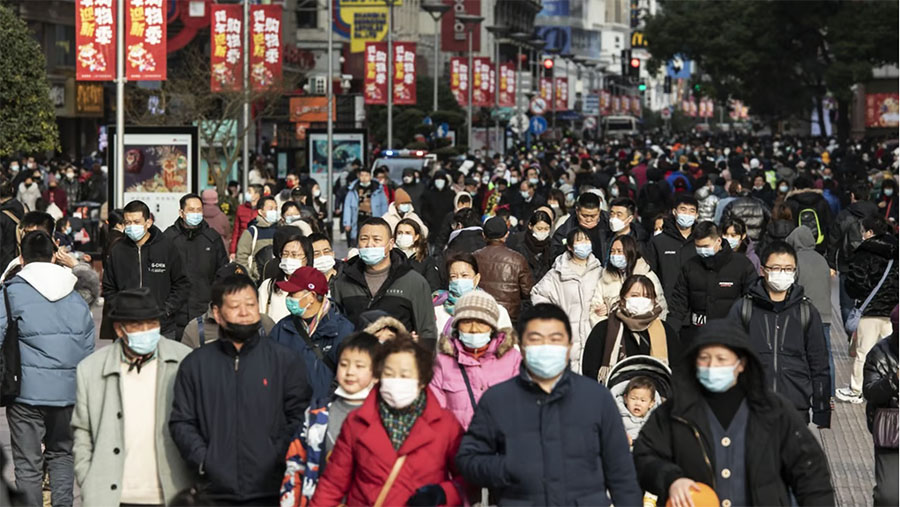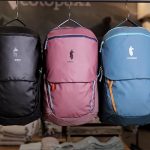Hopes by several global players in the active lifestyle space that a strengthening recovery in China would offset weakness in North America this year were dimmed Monday after China’s second-quarter gross domestic product (GDP) growth arrived below expectations.
The slowdown raised concerns that China’s initial economic rebound following the country’s end of its COVID-19 controls in December has lost steam. Given last year’s extensive COVID-related lockdowns, 2023 was widely expected to see the world’s second-largest economy post a rapid rebound.
China’s GDP advanced 6.3 percent against the coronavirus lockdown-induced low base last year but was short of forecasted growth of 7.3 percent, according to a Reuters survey of economists. Compared to the first quarter, China’s gross domestic product (GDP) rose by only 0.8 percent, down from 2.2 percent in the first three months of 2023.
Beyond GDP growth missing forecasts, another concern was the unemployment rate among ages 16-to-24 rising to 21.3 percent in June, up from 20.8 percent in May and setting a new record.
In the first half of the year, data released by the National Bureau of Statistics (NBS) showed China’s GDP grew by 5.5 percent year-on-year, with consumption as the driving force behind the recovery; however, in June, retail sales growth fell to 3.1 percent, below the 3.2 percent expected. Against easier year-ago comparisons, growth had been 18.4 percent in April and 12.7 percent in May.
Declining property prices sapped consumer confidence and also weighed on growth. Investment in property development, a driver of industrial and consumer demand, dropped 7.9 percent in the first half of the year compared to a year earlier. Housing prices have been slipping in smaller cities, and that decline spread to big cities in June.
The NBS further indicated exports in June fell 8.3 percent compared with a year earlier as foreign shipments dropped off amid a sagging global economy.
“After a sugar injection in the opening months of 2023, the pandemic hangover is plaguing China’s recovery,” wrote Harry Murphy Cruise, an economist with Moody’s Analytics, in a note, referring to the initial burst of pent-up demand after reopening. He said consumers were wary of spending and were instead saving. Businesses did not want to invest, while a nascent recovery in the property market early this year was “fizzling,” and foreign households were spending more on services than goods such as electronics, hitting China’s exports.
The waning recovery has prompted Beijing to introduce stimulus measures, but “more is desperately needed,” Cruise added.
The moderate growth numbers are likely to stoke expectations of further government efforts to stimulate the economy to ensure a 5 percent growth target is reached for 2023.
Vendors in the active lifestyle space saw a rebound in sales in China in the first quarter as pandemic-related restrictions that lasted nearly three years were lifted. Many expressed confidence on analyst calls that the gains in China would build in the coming quarters.
Nike, Adidas and Puma were among Western brands that faced backlash and boycotts in China starting in early 2021 for stating they would not source cotton from China’s Xinjiang region over reports of human rights violations against Uyghur Muslims. The boycotts enabled local Chinese brands such as Anta and Ling to gain share in China in recent years, but first-quarter results showed some recovery for the major Western players.
Nike Returns to Double-Digit Quarterly Growth In China
Nike, Inc. saw sales in China on a currency-neutral basis jump 25 percent in the fiscal fourth quarter ending May 31, following regional struggles for the last few years. Currency-neutral growth had been only 1 percent in its fiscal third quarter and 6 percent in its fiscal second quarter, with the region seeing a 13 percent decline in its 2023 fiscal first quarter.
Nike Direct grew 19 percent in the fiscal fourth quarter, with Nike Digital declining 12 percent as consumer buying over-indexed in brick-and-mortar versus the prior year, with the end of pandemic restrictions driving a spike in in-store shopping.
“This quarter left no doubt, sport is back, consumer confidence is rebounding, and Nike’s brand momentum is growing,” said Matt Friend, CFO, on Nike’s analyst call on June 29. “We celebrated the return of sport with full marketing activations around the Chinese High School Basketball League, Air Max Day and Super Brand Day. And we extended that energy into our strongest product sell-through in eight seasons, with full-price momentum, accelerated by our healthy inventory position.”
China’s inventory dollars were down high-single-digits versus the prior year, with units down double-digits. EBIT grew 70 percent on a reported basis, with year-ago margins depressed higher inventory obsolescence reserves.
John Donahoe, president and CEO, said the growth potential in China continues to be marked by the region’s growing middle class and increased focus on health and wellness, with younger consumers being the most active.
He said that Nike’s 6,000 mono-brand doors “provide such an advantage” and that the Nike brand and Jordan are adeptly connecting with China’s Gen-Zers. Donahoe said, “The Gen Z consumer in China cares about innovation, and they’re doing a great job of taking our global innovations and hyper-localizing them, as well a great job of local storytelling.”
The improved momentum in China in the quarter was not enough to offset weakness in North America, as Nike reported a rare earnings miss in the period.
Other than the quarter’s progress and upbeat comments, Nike officials did not clarify the near-term outlook for China. Friend said, “As we look forward, we are confident in the strength of our consumer connections and confident in Nike’s ability to drive sustainable long-term growth in China.”
Adidas Sees Sell-Through Improve In Q2
At Adidas AG, sales in Greater China declined 9.4 percent on a currency-neutral basis in the first quarter. Excluding the impact of the termination of its Yeezy partnership, sales were flat. On the positive side, the sell-out of the company’s products in China increased year-over-year, as reflected in double-digit growth across Adidas’ retail stores.
Adidas CEO Bjørn Gulden said on an analyst call on May 5, “That means, for the first time, inventories in the trade of Adidas products are going down, and there is a demand that the retailers haven’t seen for a long, long time. It’s the first time I see this in many, many quarters. And that makes all of us, of course, positive.”
Gulden added optimistically, “In general, a lot of energy in China when it gets to doing new things and the fact that they’re not in any, what should I say, restrictions and that people are working freely and not sitting at home.”
Gulden estimated that China’s consumers had undergone two and a half years of “quarantine or under heavy restriction” that restrained results and “three years of little sports activity” that also impacted spending in the sporting goods space. Now, Adidas is starting to again sign more athletes in China as activities resume, sponsored the sold-out Shanghai Half Marathon, and has begun again partnering with celebrities in China on lifestyle campaigns.
Asked by an analyst about the brand’s store base, Gulden said Adidas had about 8,000 stores in China between owned and partnered doors, down about 2,000 over the pandemic. However, he anticipated opening stores again in the third and the fourth quarter in fourth and fifth-tier cities should business continue to stabilize.
Gulden anticipates growth returning to China but was uncertain about the timing due to market uncertainties. Gulden said, “I am counting on China being one of our fastest-growing markets and also one of our most profitable markets, if not the most profitable. So, we are, I think, realistic, optimistic mid-term about China.”
Puma Returns to Growth in China In Q1
Puma returned to quarterly growth in Greater China in the first quarter for the first time in more than two years, and Arne Freundt, Puma’s CEO, said the company is “cautiously optimistic” about the improvement.
“We are seeing that the overall trading environment is starting to improve,” said Freundt on a media call on April 26. “We see the end of the zero-COVID policy. We see that the economy is recovering, and we see also that consumer behavior is starting to pick up. But there’s still a lot of inventory in the market, which is putting a lot of pressure on the gross profit margin because there are still a lot of promotions going on. So, we also come to think 2023 is still a transitional year despite the growth which we’re expecting for the market.”
Freundt said that for 2023, Puma is focused on making the “right investments into the brand to continue to go back to strong growth momentum in 2024” in China. The measures include continuing to reduce inventory levels and strengthen its credibility as a global sports brand with a focus on basketball, global football (soccer), running and women’s. Said Freundt, “We are more recognized currently on the fashion and lifestyle side, and we need to educate the consumer about authenticity in our DNA as a true sports brand.”
Overall, Freundt said Puma’s three priorities are “brand elevation, winning in the U.S. and winning in China,” In the quarter, ended March 31, sales were up 14.4 percent on a currency-neutral basis companywide as strength in China and other regions offset a 19.6 percent decline in North America due to promotional pressures tied to elevated inventories and inflationary pressures and efforts to reduce sales to off-price channels.
On June 19, Puma appointed Shirley Li, formerly at Adidas, as its new general manager for China.
The North Face Propels VF’s Return to Growth In China
VF Corp., the parent of The North Face, Vans, Timberland, and Dickies, also achieved a return to positive growth in China in its fiscal fourth quarter ended March 31, after seeing emerging momentum coming out of its fiscal third quarter.
APAC’s sales overall were up 10 percent on a currency-neutral basis, with Greater China also up 10 percent after declining 10 percent in the fiscal third quarter. The North Face was the standout performer, up nearly 40 percent in China “as the brand continues to fuel demand with the local consumer and achieve high sales productivity amidst the recovering marketplace environment,” said VF’s interim president and CEO, Benno Dorer, on an analyst call on May 23.
Looking ahead, VF at the time forecast “continued progressive improvement” in China and growth in Europe to deliver flat sales for its current fiscal year. A modest decline was predicted for the Americas region for the year behind a weaker U.S. wholesale business.
Columbia Sportswear’s Q1 Sales Climb Double-Digits In China
Columbia Sportswear’s China sales increased mid-20 percent in the first quarter, accelerating from an increase in the mid-single digits for the fourth quarter.
“Over the last several years, we laid the groundwork to enhance store productivity and reaccelerate growth in China,” said chairman, president and CEO Tim Boyle on an analyst call on April 27. “We invested in talent, localized product and go-to-market activities to strengthen our capabilities in this important market. I believe we are starting to see the benefits of our efforts. The easing of COVID-19 restrictions resulted in a surge of consumer demand, which was sustained throughout the quarter.”
For Spring 2023, Boyle said Columba launched a new China-specific product collection, Transit, designed for Chinese consumers that’s attracting new, younger consumers to the brand. Boyle said, “Initial sell-through performance has been exceptional. We are encouraged by the first quarter performance and anticipate China to be one of our fastest growing markets in 2023.”
Skechers Sees Return To Growth In China
Skechers USA said sales in China grew 3 percent in the first quarter, “significantly better-than-expected” and marking a return to growth.
John Vandemore, CFO, said on an analyst call on April 27 that the gains in China were “driven by strength in our physical retail stores as consumers enjoyed a return to in-person shopping. While the Chinese market has been volatile over the last few years, we are cautiously optimistic about the near-term recovery that appears to be materializing and remain confident in our long-term growth opportunity in the market.”
Wholesale growth was up single digits in China.
Skechers lifted earnings and sales guidance for the year as strong growth in the U.S. direct-to-consumer (DTC) channel and across international regions, including China, offset declines in the U.S. wholesale channel.
Vandemore still said the core assumptions from Skechers’ outlook at the start of the year remain. The CFO said, “We are still faced with numerous uncertainties about this year, particularly around macroeconomic factors, a dynamic wholesale landscape, and the shape of the market recovery in China.”
Canada Goose Sees Strong Rebound In China
Canada Goose’s sales in China in the fiscal fourth quarter ended April 2 has seen a “strong recovery from our third quarter in fiscal 2023 and has continued its momentum into fiscal year-to-date,” Dani Reiss, chairman and CEO, said on an analyst call on May 18.
Reiss said China has returned to “a more normalized operating environment” following the lifting of COVID restrictions. Reiss said, “Last quarter, we discussed the disruption in Greater China following a wave of infections seen on the heels of a sudden lifting of cover restrictions in our busiest season. Since then, we have seen a noticeable pickup in sales. Mainland China reported a record growth rate of approximately 40 percent versus last year, and APAC DTC comp growth was up 23.5 percent versus last year. Our payroll collections saw notable growth in APAC in the quarter, more than doubling compared to the same quarter last year, approaching $10 million in revenue.”
Overall DTC comparable stores in the quarter grew 6.9 percent including China, and gained 3.3 percent excluding China. For the current fiscal year, DTC comparable sales growth is projected to be up mid-single digits to mid-teens including China, and in the range of negative low-single to high-single digits, excluding China.
Reis said in the Q&A section of the call about China, “We expect the operating environment there to continue to be better, and we’re excited about the year ahead.”
Photo courtesy Bloomberg
















